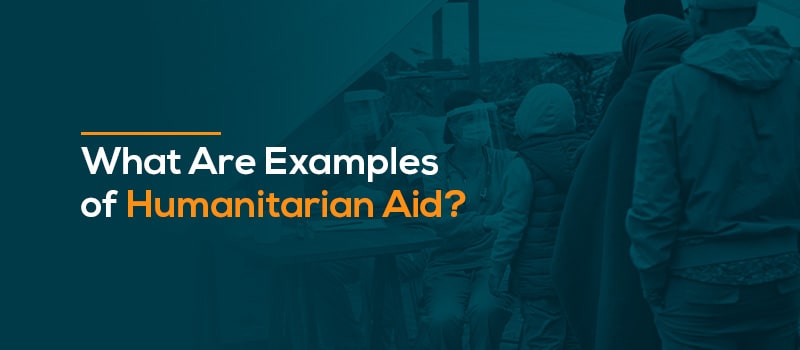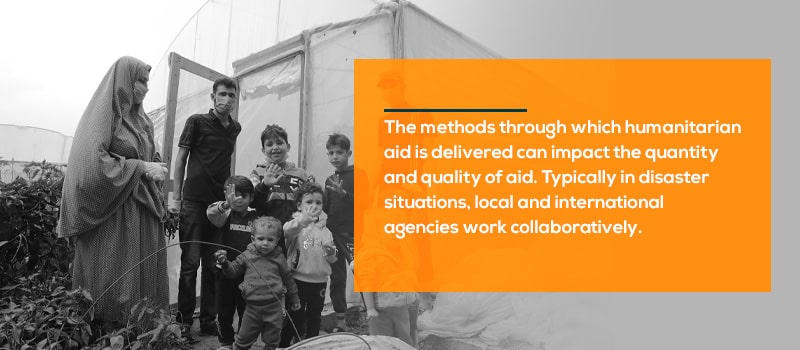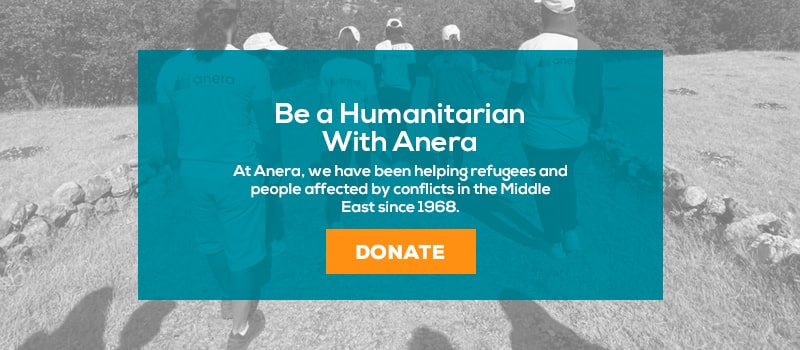What Are Examples of Humanitarian Aid?
Posted in: News


The world’s humanitarians work to make life better for people in times of need. However, many individuals find themselves confused about what exactly humanitarians do, when aid is needed, where and how humanitarians provide aid, and who receives the aid.
If you are interested in getting involved and want to know how you can help, you should first understand what humanitarianism is, who benefits from humanitarian aid, how aid is delivered, and what some examples of humanitarian aid are.
What Is Humanitarian Aid?
The concept of humanitarian aid refers to logistic and material assistance given to people who need help. This type of aid is usually provided in the short term until the government or other institutions replace the efforts with long-term assistance. Both organizations and individuals provide humanitarian relief efforts to save lives, maintain human dignity and alleviate suffering. These efforts tend to follow human-made and natural disasters, and aid can come from local or international communities.
The four principles of humanitarian aid as codified by the United Nations General Assembly (UNGA) are humanity, neutrality, impartiality and independence. These principles guide the efforts of humanitarian aid:
- Humanity: Under the principle of humanity, volunteers providing humanitarian aid are seeking to address human suffering, particularly for people who are the most vulnerable.
- Neutrality: Responses during a conflict should not favor any side. Therefore, humanitarians should not take sides in any ideological, religious, racial or political controversies, which is often one of the most challenging aspects of humanitarian aid efforts.
- Impartiality: These efforts should be provided on the basis of identified need alone, without discriminating among affected populations. All programs should be designed to support people who are left most in need after a disaster or emergency.
- Independence: The purpose of humanitarian aid is to prevent and relieve suffering, so humanitarians should not be influenced by military, economic or political objectives. Additionally, humanitarian policies should be implemented independently of government actions or policies.
Some struggle to differentiate humanitarian aid from development aid. While humanitarian aid is assistance provided during emergency situations, development aid is provided to address underlying socioeconomic factors that may have led to an emergency or crisis. In other words, the intention of humanitarian aid is to relieve suffering, and the intention of development aid is to address ongoing issues that lead to human suffering. Therefore, humanitarian aid tends to directly benefit people, and development aid usually improves structural systems.
Who Benefits From Humanitarian Aid?
These aid efforts are often provided to the most vulnerable populations following an emergency or a human-made or natural disaster. Those who benefit from humanitarian aid include:
- Homeless individuals
- Refugees
- Natural disaster survivors
- War survivors
- Famine victims
Those who have been impacted by homelessness, war, famine and natural disasters often rely on the help of volunteers to end their suffering.


How Humanitarian Aid Is Delivered
The methods through which humanitarian aid is delivered can impact the quantity and quality of aid. Typically in disaster situations, local and international agencies work collaboratively. These agencies can play different roles depending on the arrangement. As a result, humanitarian aid can be delivered in a variety of ways, and efforts can cover a wide range of needs, such as:
- Food
- Shelter
- Education
- Protection
- Healthcare
Most humanitarian aid is provided via in-kind goods or assistance. This aid is sent by intergovernmental, multilateral and bilateral organizations, and people who are involved with local first-responders, like businesses, military, local governments, civil society and affected populations themselves.
10 Examples of Humanitarian Aid
By familiarizing yourself with humanitarian aid examples, you can better understand how to help your fellow human beings. These aid efforts can happen on the local level or on a large scale. As an individual, you can participate in day-to-day humanitarian aid delivery or work in collaboration with an organization, taking actions like these:
- Donating blood
- Raising funds for a family in need
- Volunteering at an animal rescue organization
- Making weekly donations to the local food pantry
- Visiting an elderly person in a nursing home or hospital
- Delivering meals to families in need in your community
- Volunteering at a local homeless shelter or soup kitchen
- Donating to an organization that assists people in difficult situations
- Donating supplies to a local homeless shelter, such as toiletries, blankets and clothes
- Volunteering with large-scale organizations to provide aid
How You Can Get Involved
Get involved in providing humanitarian aid by donating, fundraising or partnering with Anera. Here, we help refugees and people in vulnerable communities within Lebanon, Jordan and Palestine become self-sufficient. Since our humanitarians are from the communities they serve, they can identify exactly how to empower their refugee neighbors.
Here are a few ways to become a humanitarian with us:
- Learn more about the role of humanitarian aid in Palestine, Lebanon and Jordan, the places where Anera works. These culturally rich, beautiful countries confront a host of challenges, from conflict and displacement to water scarcity and depressed economies.
- Follow and share Anera’s humanitarian stories, news, films and photos on Facebook, LinkedIn, Twitter or Instagram. Our handle is ANERAorg.
- Run your own fundraising campaign for Anera using our easy, fun fundraising platform. By getting your family and friends involved, you can improve the lives of refugees and other vulnerable people in Palestine, Lebanon and Jordan.
- Donate to help refugees. Anera builds on the resilience that lives in the hundreds of vulnerable refugee communities we reach. Because we believe that each person, no matter their circumstances, embodies promise. And that people with hope can shape the life of their families, their neighborhoods, and their region.
With several crises occurring throughout the Middle East, your help is critical to refugees and vulnerable populations now more than ever.


Be a Humanitarian With Anera
At Anera, we have been helping refugees and people affected by conflicts in the Middle East since 1968. The Anera staff works with partners in Lebanon, Jordan and Palestine to mobilize resources for sustainable economic, education and health development, along with immediate emergency relief. It’s our mission to serve communities and deliver help where it’s needed.
Would you like to make a difference? To provide immediate, sustainable relief to Palestinian and Syrian refugees and other vulnerable communities, donate through Anera today and fund humanitarian aid for Palestinians.
OUR BLOG
Related
Joint Statement 200+ NGOs call for immediate action to end the deadly Israeli distribution scheme (including the so-called Gaza Humanitarian Foundation) in Gaza, revert to the existing UN-led coordination mechanisms, and lift the Israeli government’s blockade on aid and commercial…

